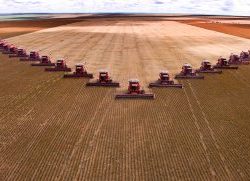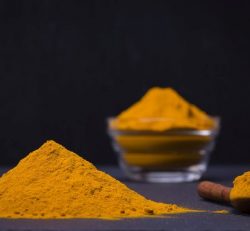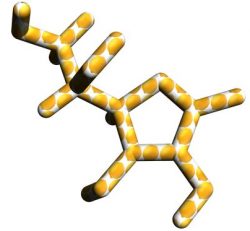FULL FOCUS ON HEALTHY PRODUCTION SYSTEMS
In today’s pig production, moving away from preventive antibiotics means that we have to focus on a higher level of animal health, improved husbandry, increased productivity and, ultimately, a globally responsible and sustainable system. But this requires a different perspective.
Many farmers are scared to withdraw antibiotics from production because they fear poor health and performance. It is important for the producer to understand how habits and beliefs influence antibiotic use and whether the ‘antibiotic insurance policy against disease’ is really working on the farm, or if it is simply used out of habit.
Assembling the right team
A key to success in an antibiotic reduction programme is to assemble a team that includes veterinarians, nutritionists, consultants (governmental, academic or industry), building engineer experts, owners, managers and workers. The varied expertise of the team can evaluate potential weaknesses and strengths of the production system, can determine the key factors to be addressed and can provide motivation and perseverance.
Farm-adapted programme
The programme needs to be farm-adapted with a reasonable timeline, with multiple targets and goals to achieve. Audits to establish the baseline situation and recurrent audits to monitor progress are important to keep the momentum going. It is important to keep motivation and progress flowing with systems to benchmark the production against peers, along with targets that are objective and clearly defined. An industry-initiated antibiotic reduction programme has been developed by Alltech to provide the above-mentioned coaching alongside applying proven feed technology solutions to improve health and productivity. This programme includes the registration and evaluation of antibiotic use. Benchmarking is often used to put the practice into perspective. It is important to not only evaluate quantities used, but also which target groups are treated, how many treatments are performed and the type of antibiotics that are used. Furthermore, the use of critical antibiotics is evaluated. Critical antibiotics are those that need to retain their efficacy for treating human diseases but use in animals is discouraged or prohibited.

Appropriate feed for the various stages of development is very important; weaning times and weaning systems in piglets need to allow the piglets to transition from sow’s milk to solid feeds. Photo: Koos Groenewold
Different factors and their interaction
Biosecurity, herd-level immunity, feeds and feeding systems, stress levels, individual pig health and environmental conditions all influence animal health and productivity, and all interact with each other. Biosecurity is critical to prevent the introduction of disease-causing organisms on a farm and prevent the spread within a farm.
Biosecurity the highest priority
European pig health experts have indicated that biosecurity is the highest priority as an alternative solution to antimicrobials (Postma, 2015b). Higher levels of biosecurity in pig farms has been shown to be associated with higher levels of production and decreased antimicrobial use and resistance (Postma, 2015a).
Vaccines have proven crucial and cost-effective
A good, developed immunity to various diseases is essential in industrial pig production. Vaccines have proven to be crucial and very cost-effective in preventing the onset and spread of infectious diseases and are therefore crucial in the modern healthy production system. However, immune-enhancing measures are not limited to vaccinations; there are numerous other factors, such as genetic selection, pathogen-free animals, nutrition, immune-enhancing supplements, mycotoxinprevention, stress reduction, stocking density and environmental factors.
Mycotoxins are highly prevalent in our modern feed sources; they are some of the most potent immune-suppressants known. Many farmers underestimate mycotoxinpresence and risks. It is imperative to evaluate the risks of mycotoxins for pigs and take appropriate measures, such as sourcing of feed ingredients, proper transportation and storage of feed and including a broad-spectrum mycotoxin binder such as Mycosorb A+® in the feed. Supplementing immune-boosting vitamins such as vitamin E and organic minerals such as selenium (Sel-Plex®) is very important for optimal functioning of the immune system.
Healthy guts and little stress
A healthy gut is the key to a healthy animal. The gut contains a very active immune system, and this is where the pig first encounters potential disease-causing organisms such as bacteria, viruses and parasites, or toxic compounds such as mycotoxins. A balanced and diverse microbial composition is critical for optimal digestion and nutrient uptake.
Appropriate feed
The most important tool for good gut health is to provide the best feed possible that meets the nutritional needs for the specific age and stage of production. Appropriate feed for the various stages of development is very important; weaning times and weaning systems in piglets need to allow the piglets to transition from sow’s milk to solid feeds.
Dietary supplements
Multi-phase feeding systems and precision feeding are valuable tools not only for productivity, but also for health. Dietary supplements such as organic acids, prebiotics, probiotics and enzymes are all valuable feed supplements to support the gut function. Organic minerals that are more easily absorbed, stored and assimilated by the body, compared to their inorganic counterparts, are very important for immunity, growth and metabolic functions.
Stress
Cheap feed sources may be very expensive because of increased diseases and reduced feed efficiency. At the same time, weaning stress should be minimised as much as possible. Transport and trade in live pigs is a practice that imposes high physiological stress and creates a high risk of the spread of diseases. This creates a need for antimicrobial medication to protect the pigs from disease.
Ventilation and overstocking
Also good air quality and ventilation is essential to keep our pigs healthy and vigorous, and many of our current systems have weaknesses in this area. Overstocking is unfortunately much too common, and this impacts the environmental temperature and hygiene, and many times leads to the reduction in cleaning and disinfection between batches of pigs. Overcrowding also imposes social stress, with insufficient eating and resting space.
Does it pay off?
Between 2009 and 2014, the use of antibiotics in Dutch livestock decreased by 58%. This does not appear to have affected farm profits; the animal husbandry sector did not diminish in size, and the average technical and economic results do not appear to have worsened. Since Belgium started its initiative to reduce antimicrobial use and resistance in 2011, through the creation of the Center of Expertise on Antimicrobial Consumption and Resistance in Animals (AMCRA), there has been a 20% decrease in overall antimicrobial use. A recent European study assessed, across four countries (Belgium, France, Germany and Sweden), the technical and economic impact of herd-specific interventions in 70 farrow-to-finish pig farms aiming to reduce antimicrobial usage in pig production while implementing alternative measures (Rojo-Gimeno, 2016). A median reduction of 47% of antimicrobial use treatments was achieved, corresponding to a 31% median reduction of antimicrobial expenditures. The median increase in net farm profit among Belgian and French farms was estimated to be € 4.5 or € 1.2 per sow per year, using the deterministic and stochastic models, respectively. The improved profitability was mostly due to change in feed conversion ratio and daily weight gain rather than by a change in antimicrobial expenditures. This clearly indicates that antibiotic reduction can be cost-effective.
Alltech Antibiotic Reduction programme
In the Alltech Antibiotic Reduction programme, farmers have seen even greater profits, as some of the nutritional solutions improve gut health, reduce mycotoxin exposure and improve immunity, thereby achieving improved productivity. With this programme, the challenges to productivity and health are primarily improved, and thereafter a step-by-step reduction in antimicrobial use is implemented. The antibiotics are removed to assure continued high production. Producers have experienced more piglets weaned, improved feed efficiency, reduced disease and, ultimately, a return on the investments made in the transition to responsible antibiotic use.
Conclusion
There is clear evidence that antibiotic reduction can be cost-effective and, in general, does not lead to more disease and productivity losses. For every farm, there may be temporary and unique challenges to address in the process of eliminating all unnecessary antibiotic use. It is important to not let temporary setbacks or minor obstacles deter us from our mission to safeguard antibiotics for the future. The Alltech Antibiotic Reduction programme can be used to achieve low antimicrobial use, higher productivity and, ultimately, a financially sustainable healthy production.
References are available on request.
Source: www.allaboutfeed.net












